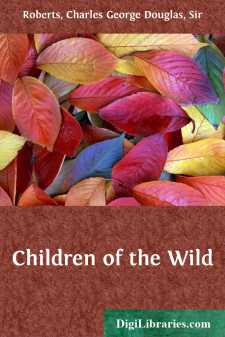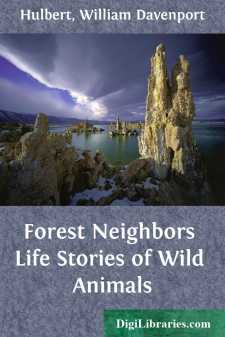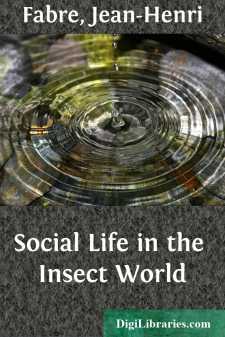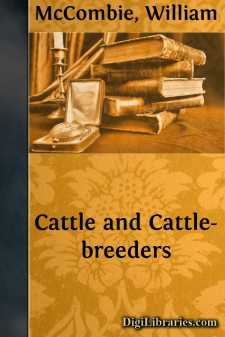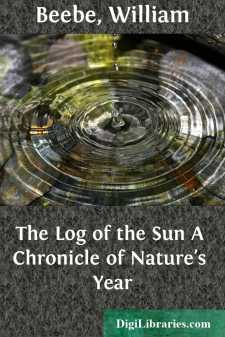Nature
Nature Books
Sort by:
Introduction.—The occasion for publishing this catalogue of Philippine earthquakes which were of violent and destructive character has been furnished by a request from Prof. John Milne for a list of such phenomena, to be included in the General Earthquake Catalogue which this eminent seismologist is preparing under the auspices of the British Association for the Advancement of Science. The said...
more...
CHAPTER I THE LITTLE FURRY ONES THAT SLIDE DOWN HILL In the brown, balsam-smelling log cabin on the shores of Silverwater, loveliest and loneliest of wilderness lakes, the Babe's great thirst for information seemed in a fair way to be satisfied. Young as he was, and city-born, the lure of the wild had nevertheless already caught him, and the information that he thirsted for so insatiably was all...
more...
INTRODUCTION Somethirty years ago, while out on one of his landlooking trips in the woods of Northern Michigan, my father came upon a little lake which seemed to him the loveliest that he had ever seen, though he had visited many in the course of his explorations. The wild ponds are very apt to be shallow and muddy, with low, marshy shores; but this one was deep and clear, and its high banks were...
more...
by:
Royal Dixon
FOREWORD "And in the lion or the frog—In all the life of moor or fen—In ass and peacock, stork and dog,He read similitudes of men." More and more science is being taught in a new way. More and more men are beginning to discard the lumber of the brain's workshop to get at real facts, real conclusions. Laboratories, experiments, tables, classifications are all very vital and all very...
more...
by:
George Waring
CHAPTER I. "Bless me, I do believe I have been asleep!" said a squirrel, one fine morning in early spring, when the delicious warmth of the sun had reached him in his winter retreat, and roused the lazy little fellow from a two months' nap. The truth is, that he and his family had fallen asleep at the first setting in of the cold weather, and had passed the dismal winter in a state of...
more...
by:
Jean-Henri Fabre
CHAPTER I THE FABLE OF THE CIGALE AND THE ANT Fame is the daughter of Legend. In the world of creatures, as in the world of men, the story precedes and outlives history. There are many instances of the fact that if an insect attract our attention for this reason or that, it is given a place in those legends of the people whose last care is truth. For example, who is there that does not, at least by...
more...
by:
William McCombie
I. THE FEEDING OF CATTLE, Etc. (Read before the Chamber of Agriculture.) As my friend Mr Stevenson and some other members of the Chamber of Agriculture have expressed a desire that I should read a paper on my experience as a feeder of cattle, I have, with some hesitation, put together a few notes of my experience. I trust the Chamber will overlook the somewhat egotistical form into which I have been...
more...
by:
William Beebe
BIRDS OF THE SNOW No fact of natural history is more interesting, or more significant of the poetry of evolution, than the distribution of birds over the entire surface of the world. They have overcome countless obstacles, and adapted themselves to all conditions. The last faltering glance which the Arctic explorer sends toward his coveted goal, ere he admits defeat, shows flocks of snow buntings...
more...
LOBO THE KING OF CURRUMPAW Currumpaw is a vast cattle range in northern New Mexico. It is a land of rich pastures and teeming flocks and herds, a land of rolling mesas and precious running waters that at length unite in the Currumpaw River, from which the whole region is named. And the king whose despotic power was felt over its entire extent was an old gray wolf. Old Lobo, or the king, as the Mexicans...
more...
by:
Douglas English
MUS RIDICULUS Mus ridiculus! The taunt had been flung at him by a stout field-vole, and, by reason of its novelty as well as of its intrinsic impertinence, had sunk deep into his memory. He had felt at the time that “Wee sleekit, cowrin’, tim’rous beastie” was but a poor rejoinder. But he knew no Latin and chose what was next in obscurity. Besides, he was a young mouse then, and breathless with...
more...



